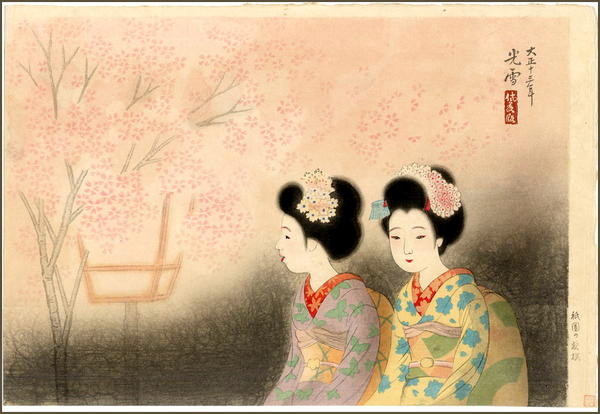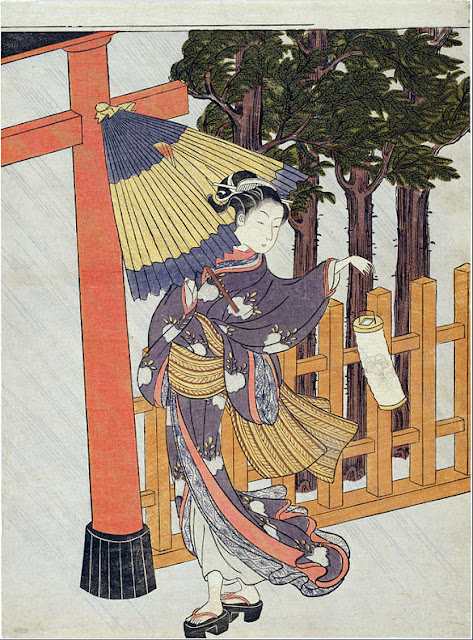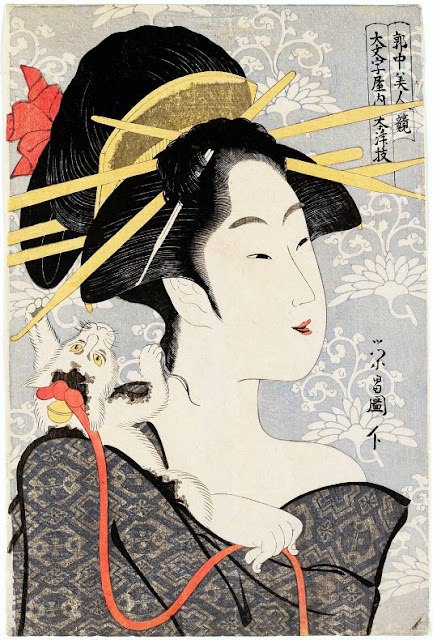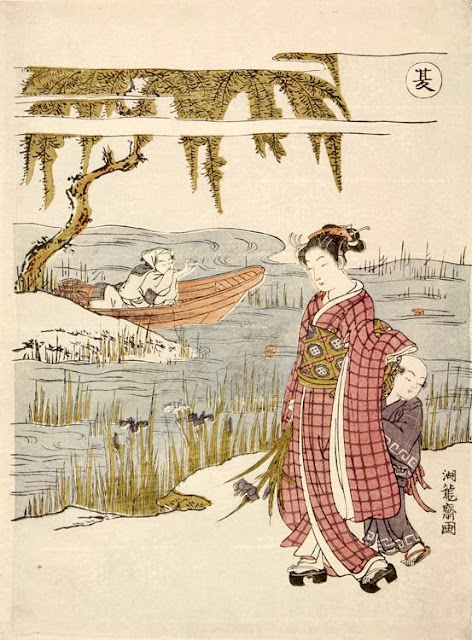 |
Kiyonaga: Actor Onoe Matsusuke Playing the Shamisen, with a Courtesan and a Kamuro
1782 |
When Torii Kiyonaga (1782-1815) became the head of the Torii School, he changed ukiyo-e by fusing different traditions. Mainly the Katsukawa School, Harunobu's style, and, of course, his own Torii School. He summed up ukiyo-e so far and set the direction for its development in the following years.
His style appears naturalistic, but in a graceful manner. Kiyonaga is one of the really great woodblock masters, especially when it comes to bijinga. But of course he also made kabuki prints, yakusha-e. The Torii school nearly had monopoly on printed matter for the kabuki theatres.
This print from 1782 is Actor Onoe Matsusuke Playing the Shamisen, with a Courtesan and a Kamuro.



















